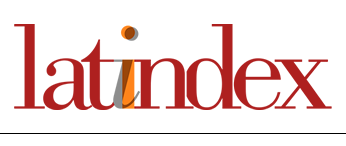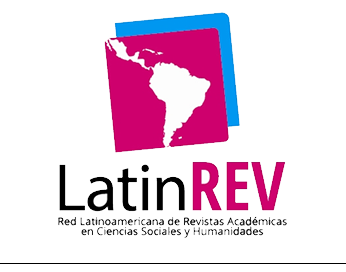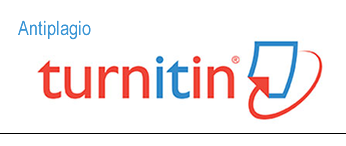Aula invertida con uso de recursos tecnológicos: sus efectos sobre el aprendizaje y la actitud hacia las matemáticas en una muestra de estudiantes de honduras
Resumen
La tecnología es parte integral del proceso educativo, por lo que es necesario conocer sus efectos sobre el rendimiento y la actitud hacia las matemáticas de los estudiantes. El presente estudio procuró determinar si existe una diferencia significativa de desempeño matemático y de actitud hacia las matemáticas entre un grupo en el que se utilizó la clase invertida con el uso de recursos tecnológicos y uno en el que se utilizó la clase tradicional. Participaron 38 estudiantes del segundo año de Bachillerato en Ciencias y Humanidades en una escuela privada en Honduras, durante el curso escolar 2018-2019. La investigación fue de tipo cuantitativa, con un diseño cuasiexperimental. Se utilizó la prueba estadística no paramétrica U de Mann Whitney para dos muestras independientes. Se encontró un efecto positivo al aplicar la clase invertida con el uso de recursos tecnológicos sobre el rendimiento académico y sobre la actitud hacia las matemáticas en sus cuatro dimensiones: valor, autoconfianza, disfrute y motivación.
Descargas
Citas
Adams, S. y Burns, M. (1999). Connecting student learning and technology. Southwest Educational Development Laboratory.
Aiken, L. R. (1970). Attitudes toward mathematics. Review of Educational Research, 40(4), 551-596. https://doi.org/10.3102/00346543040004551 DOI: https://doi.org/10.3102/00346543040004551
Arnold-Garza, S. (2014). The flipped classroom teaching model and its use for information literacy instruction. Communications in Information Literacy, 8(1), 7-22. https://doi.org/10.13016/M2R040
Aşiksoy, G. y Özdamli, F. (2016). Flipped classroom adapted to the ARCS model of motivation and applied to a physics course. Eurasia Journal of Mathematics, Science and Technology Education, 12(6), 1589-1603. https://doi.org/10.12973/eurasia.2016.1251a DOI: https://doi.org/10.12973/eurasia.2016.1251a
Barr, R. B. y Tagg, J. (1995). From teaching to learning: A new paradigm for undergraduate education. Change: The Magazine of Higher Learning, 27(6), 13-26. https://doi.org/10.1080/00091383.1995.10544672 DOI: https://doi.org/10.1080/00091383.1995.10544672
Bergmann, J. y Sams, A. (2012). Flip your classroom: Reach every student in every class every day. International Society for Technology in Education.
Bergmann, J. y Sams, A. (2015). Flipped learning for math instruction. International Society for Technology in Education.
Bhagat, K. K. y Chang, C. Y. (2015). Incorporating GeoGebra into geometry learning: A lesson from India. Eurasia Journal of Mathematics, Science and Technology Education, 11(1), 77-86. https://doi.org/10.12973/eurasia.2015.1307a DOI: https://doi.org/10.12973/eurasia.2015.1307a
Bhagat, K. K., Chang, C. N y Chang, C. Y. (2016). The impact of the flipped classroom on mathematics concept learning in high school. Journal of Educational Technology and Society, 19(3), 134-142. https://www.jstor.org/stable/10.2307/jeductechsoci.19.3.134
Blitzer, R. (2014). Precalculus (5a ed.). Pearson.
Charles, R. I., Hall, B., Kennedy, D., Bass, L. E., Jonson, A., Murphy, S. J, y Wiggins, G. (2015). Geometry Common Core. Pearson.
Charles, R. I., Hall, B., Kennedy, D., Bellman, A. E., Bragg, S. C., Handlin, W. G., Murphy, S. J. y Wiggins, G. (2015). Algebra 2 Common Core. Pearson.
Cheung, K. C. (1988). Outcomes of schooling: Mathematics achievement and attitudes towards mathematics learning in Hong Kong. Educational Studies in Mathematics, 19(2), 209-219. https://doi.org/10.1007/978-94-017-2209-4_6 DOI: https://doi.org/10.1007/978-94-017-2209-4_6
Connor, K. A., Newman, D. L y Deyoe, M. M. (2014, 15-18 de junio). Flipping a classroom: A continual process of refinement [Ponencia]. ASEE 121st Anual Conference and Exposition, Indianapolis, IN, Estados Unidos.
Cobb, P. (1994). Constructivism in mathematics and science education. Educational Researcher, 23(7), 4. https://doi.org/10.3102/0013189X023007004 DOI: https://doi.org/10.3102/0013189X023007004
Crouch, C. H. y Mazur, E. (2001). Peer instruction: Ten years of experience and results. American Journal of Physics, 69(9), 970-977. https://doi.org/10.1119/1.1374249 DOI: https://doi.org/10.1119/1.1374249
DeBellis, V. A. y Goldin, G. A. (1997). The affective domain in mathematical problema solving. En S. Benson et al. (Eds.), Proceedings of the Twenty-First International Conference for the Psychology of Mathematics Education (Vol. 2, pp. 209-216). University of Helsinki, Department of Teacher Education.
Deslauriers, L., Schelew, E. y Wieman, C. (2011). Improved learning in a large-enrollment physics class. Science, 332(6031), 862-864. https://doi.org/10.1126/science.1201783 DOI: https://doi.org/10.1126/science.1201783
Files, D. D. (2016). Instructional approach and mathematics achievement: An investigation of traditional, online, and flipped classrooms in college algebra [Tesis doctoral, Florida Institute of Technology]. DSpace. https://repository.lib.fit.edu/handle/11141/834
Freeman, S., Eddy, S. L., McDonough, M., Smith, M. K., Okoroafor, N., Jordt, H. y Wenderoth, M. P. (2014). Active learning increases student performance in science, engineering, and mathematics. Proceedings of the National Academy of Sciences, 111(23), 8410-8415. https://doi.org/10.1073/pnas.1319030111 DOI: https://doi.org/10.1073/pnas.1319030111
García de Oliveira Fassbinder, A., Moreira, D., Cruz, G. y Barbosa, E. F. (2014). Tools for flipped classroom model: An experiment in teacher education. En 2014 IEEE Frontiers in Education Conference (FIE) Proceeding. https://doi.org/10.1109/FIE.2014.7044074 DOI: https://doi.org/10.1109/FIE.2014.7044074
Giannakos, M, N., Krogstie, J. y Aalberg, T. (2016). Video-based learning ecosystem to support active learning: Application to an introductory computer science course. Smart Learning Environments, 3(11). https://doi.org/10.1186/s40561-016-0036-0 DOI: https://doi.org/10.1186/s40561-016-0036-0
Gray, L., Thomas, N. y Lewis, L. (2010). Teachers' use of educational technology in US public schools: 2009. First look. National Center for Education Statistics.
Hake, R. R. (1998). Interactive-engagement versus traditional methods: A six thousand student survey of mechanics test data for introductory physics courses. American Journal of Physics, 66(1), 64-74. https://doi.org/10.1119/1.18809 DOI: https://doi.org/10.1119/1.18809
Hannula, M. S. (2002). Attitude towards mathematics: Emotions, expectations and values. Educational Studies in Mathematics, 49(1), 25-46. https://doi.org/10.1023/A:1016048823497 DOI: https://doi.org/10.1023/A:1016048823497
Herring, M. C. (2004). Development of constructivist-based distance learning environments: A knowledge base for K-12 teachers. Quarterly Review of Distance Education, 5(4), 231-242.
Huereca, K. (2015). High school mathematics teachers' connective knowledge of the challenges and possibilities in implementing the flipped learning model: An embedded mixed-methods study (Publicación No 3715436) [Tesis doctoral, Universidad de Texas at El Paso]. ProQuest Dissertations and Theses Global.
Hunter, B. (2015). Teaching for engagement: Part 1: Constructivist principles, casebased teaching, and active learning. College Quarterly, 18(2), 1-16. http://collegequarterly.ca/2015-vol18-num02-spring/hunter.html
Jovanovic, J. y King, S. S. (1998). Boys and girls in the performance-based science classroom: Who’s doing the performing? American Educational Research Journal, 35(3), 477-496. https://doi.org/10.3102/00028312035003477 DOI: https://doi.org/10.3102/00028312035003477
Kinderman, K. A. (2015). The flipped classroom: An alternative to teaching models in an elementary classroom (Publicación No 1767791906) [Tesis de maestría, The University of the Arts]. ProQuest Dissertations and Theses Global.
Lai, C. L. y Hwang, G. J. (2016). A self-regulated flipped classroom approach to improving students’ learning performance in a mathematics course. Computers and Education, 100, 126-140. https://doi.org/10.1016/j.compedu.2016.05.006 DOI: https://doi.org/10.1016/j.compedu.2016.05.006
Lasry, N., Dugdale, M. y Charles, E. (2014). Just in time to flip your classroom. Physics Teacher, 52(1), 34-37. https://doi.org/10.1119/1.4849151 DOI: https://doi.org/10.1119/1.4849151
Mason, G. S., Shuman, T. R. y Cook, K. E. (2013). Comparing the effectiveness of an inverted classroom to a traditional classroom in an upper-division engineering course. IEEE Transactions on Education, 56(4), 430-435. https://doi.org/10.1109/TE.2013.2249066 DOI: https://doi.org/10.1109/TE.2013.2249066
Mau, D. (2016). A case study of middle schools teachers' perceptions of the use of classroom websites [Tesis doctoral, Walden University]. Walden Dissertations and Doctoral Studies. https://scholarworks.waldenu.edu/dissertations/2218
McLeod, D. B. (1992). Research on affect in mathematics education: A reconceptualization. En D. A. Grouws (Ed.), Handbook of research on mathematics teaching and learning (pp. 575-596). Macmillan.
Morgan, H. (2014). Focus on technology: Flip your classroom to increase academic achievement. Childhood Education, 90(3), 239-241. https://doi.org/10.1080/00094056.2014.912076 DOI: https://doi.org/10.1080/00094056.2014.912076
Muthulakshmi, P. y Veliappan, A. (2015). Effectiveness of an interactive multimedia learning package in developing attitude towards mathematics. Journal on School Educational Technology, 11(3), 40-46. https://doi.org/10.26634/jsch.11.3.4789 DOI: https://doi.org/10.26634/jsch.11.3.4789
Ni, M., Lam-for, K., Zhen, L., Xie, Y., Long, H., Zheng, X. y Li, W. (2015). A study of an e-schoolbag supporting flipped classroom model for junior mathematics review class. En S. K. S. Cheung, L. Kwok, H. Yang, J. Fong y R. Kwan (Eds.), Hybrid learning: Innovation in educational practices (pp. 243-254). Springer-Verlag. https://doi.org/10.1007/978-3-319-20621-9_20 DOI: https://doi.org/10.1007/978-3-319-20621-9_20
Núñez Paz, J. A. (2018a). Section 8.2 Reciprocal function family (edpuzzle). https://edpuzzle.com/media/5b50df386571113e5e256422
Núñez Paz, J. A. (2018b). Calculus - What is a one sided limit (edpuzzle). https://edpuzzle.com/media/5b51269ce70eb94118be2a74
Overbay, A., Patterson, A. S., Vasu, E. S. y Grable, L. L (2010). Constructivism and technology use: Findings from the Impacting Leadership Project. Educational Media International, 47(2), 103-120. https://doi.org/10.1080/09523987.2010.492675 DOI: https://doi.org/10.1080/09523987.2010.492675
Palmer, K. (2015). Massive open online courses: Evaluation and usage patterns of residential students in higher education (Publicación No 1727612911) [Tesis doctoral, Fielding Graduate University]. ProQuest Dissertations and Theses Global.
Puccetti, G. P. (2016). Blended technology rich instruction verses blended computer managed instruction in 8th grade digital literacy instruction (Publicación No 10149966) [Tesis doctoral, Northcentral University]. ProQuest Dissertations and Theses Global.
Powell, K. C. y Kalina, C. J. (2009). Cognitive and social constructivism: Developing tools for an effective classroom. Education, 130(2), 241-251.
Ramaglia, H. (2015). The flipped mathematics classroom: A mixed methods study examining achievement, active learning, and perception (Publicación No 1761168648) [Tesis doctoral, Kansas State University]. ProQuest Dissertations and Theses Global.
Serway, R. A y Faughn, J. S. (2012). Physics. Holt McDougal.
Spector, J. M. (2013). Emerging educational technologies and research directions. Educational Technology and Society, 16(2), 21-30. https://www.ds.unipi.gr/et&s/journals/16_2/3.pdf
Strohmyer, D. A. (2016). Student perceptions of flipped learning in a high school math classroom [Tesis doctoral, Walden University]. Walden Dissertations and Doctoral Studies. https://scholarworks.waldenu.edu/cgi/viewcontent.cgi?article=3281&context=dissertations
Tapia, M. (1996, 6-8 de noviembre). The Attitudes Toward Mathematics Instrument [Presentación de documento]. Reunión anual de la Mid-South Educational Research Association, Tuscaloosa, AL, Estados Unidos.
Zakariya, Y. F. (2017). Development of Attitudes towards Mathematics Scale (ATMS) using Nigerian data - Factor analysis as a determinant of attitude subcategories. International Journal of Progressive Education, 13(2), 74-84. https://ijpe.penpublishing.net/makale/237











